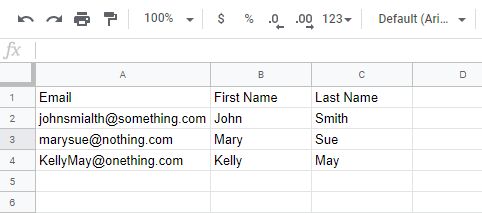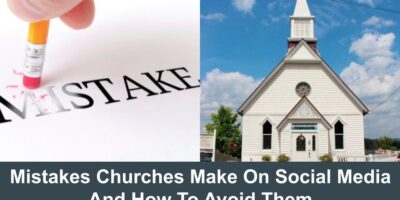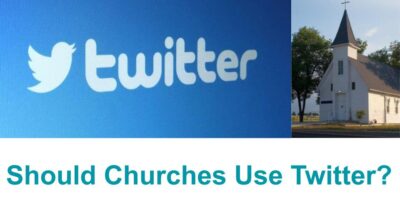Building an email list is still the most effective method for communicating with a church’s followers. Not Facebook. Not Instagram. Not Pinterest. Not Twitter. This article will focus on the basic concepts for building your church’s email list to stay in touch.
How do you make a church email list? Building an email list to be used for church staff breaks down into 3 Major Steps: 1. Collection, 2. Collation, 3. Importation.
- Collection – provide as many ways as possible for church visitors to provide their email.
- Collation – Put the collected emails together in a centralized list
- Importation – Feed the list into a system that can send emails to individuals, sub-groups within the list, or the entire list.
Why do churches need an email list?
Before we get too far into the steps of ‘how’, let’s cover a little bit about the ‘why’ a church should actively be building an email list.
Of all the forms of electronic communication, email is the only method that everyone who has Internet uses. Some people use Twitter, many do not. A large amount of people use Facebook, but there is increasingly more that won’t touch Facebook with a 10 foot pole.
But if you have Internet accounts at home, you have an email address. If you have a smartphone, you have an email address. Even your basic institutions we all rely on such as banks and the government require an email if you interact with them online.
So if your church’s mission is to reach as many people as possible by as many channels possible, choose the method that is nearly guaranteed to be used by the most people possible: Email.
How can a church collect emails?
The first of the three steps in building your church’s email list is Collection. On this step, cast your net as wide as possible.
The least technical way to collect emails is to use a connection card for visitors to fill out while in the church building itself. A connection card is really nothing more than a postcard or tear-off section of the church bulletin where visitors can fill in their contact information.
Spread these connection cards out everywhere foot traffic comes through the church building during services. In the vestibule, near the collection box, in the pews or seats, and near the areas of fellowship such as the snack/coffee table.
Have greeters, staff, deacons and the pastor aggressively encourage new visitors to fill out a connection card to let the church staff know they attended. Make it clear that the email is used to inform about upcoming events, spread Gospel words of encouragement, and respond to prayer requests.
Once a visitor fills out a connection card, kindly remind them to either drop it in with the offering or hand it off to a member of the church staff. It’s important to make this process as trouble free as possible for a visitor. If it’s too complicated or if there are too many steps to go through for a visitor to provide their email, they simply won’t do it.
The more technical way for a church to collect emails is to have a signup form on the church’s website. If your church doesn’t have a website, you can skip this part but seriously consider setting up a website for the church. I’ll cover how to set up a church website in another article.
Once the collection cards are dropped off, gather them and hand them off to somebody who’s in charge of updating the church’s contact list. Do not leave the cards scattered around for anyone to find. It’s personal information and it could cause problems for the church if that information was handled carelessly. More on that later.
With most website hosting platforms, there are a multitude of plugins and generic forms that are available to add to your website that allow website visitors to opt-in to your email list. There’s too many ways to cover that here without making this article 50 pages long, so your best bet is to work with your webmaster or contact your web hosting provider if your website is DIY.
How to collate the emails for the church
Of the 3 major steps for building a church email list, this is the simplest.
For emails collected via a collection card, record the emails on a spreadsheet or simple text file. At a minimum, have three columns for email, first name, and last name. You can have more columns to include detail like home address and phone number, but these three are the basic must haves.

If the email was collected via an opt-in form on your website, the list is already created for you. Again, speak with your webmaster or website hosting provider for instructions to retrieve the list.
How to import the emails for best church usage
Well, here’s where the rubber meets the road. You’ve collected emails from every avenue possible. You’ve collated the collection onto an electronic list. Now it’s time to import the emails into a system that will allow you to send emails in small or large batches, depending on the need.
The first point here is to decide where exactly you’re going to put the emails for delivery. There are dozens of online systems built to store emails for mass mailings. Some of the commonly used systems for simple mailings include MailChimp, ConvertKit, and AWeber.
I personally use AWeber because it’s reasonable priced and you can do a lot with breaking up your big list into smaller lists for specific purposes. Here’s what I mean by that:
Let’s say you have an email list of everyone that’s ever visited your church. Now say you want a subset of that big list for people who are regular attenders but NOT church members. This ability to segment your list based on select criteria is great if you want to target specific groups with custom email messages.
For most of these systems, the setup is pretty much the same. Go to the website of the system you want to use, create an account, and then create a new ‘list’ in the system you’ve selected by uploading your collated file. Each service will walk you through the process. But should you run into trouble, please contact me at [email protected] for assistance.
What about security and privacy?
It’s increasingly important to make sure email information is kept secure in this age of data privacy and breaches. It’s the church staff’s responsibility to ensure the email list is never given out to anyone without the list members permission, and the church should never use the email list for anything other than the uses for which it was described.
Here’s an example:
Let’s say you ask a visitor to give their email so you can send them emails about upcoming church events, but a deacon “borrows” the list to solicit potential customers for his roofing business.
That’s a No-No
In general, you’ll be fine as long as you use common sense. Don’t give the list out to an un-trusted party, do keep the list in a secure location that has at least password protection, and don’t use the list for anything other than its intended purpose.
I hope you found this article useful. If you have any comments or questions, please contact me at [email protected] .
By the way, I mentioned before that I personally use AWeber for storing email lists and sending mass emails. The service is very intuitive if you have no tech experience, and the subscription is cost effective enough for even the smallest churches. If you’d like to check them out, please click on the following link: Try AWeber
It is an affiliate link, so if you subscribe you’ll be helping to contribute to keeping this blog running. Thank you.
Related questions
Who on the church staff should have access to emails? The answer varies depending on your church size. Because emails are considered sensitive data, they should only be accessible to church staff who have an equal level of responsibility. Common examples are Executive Pastors, Church Administrators, and Senior member staff members.




